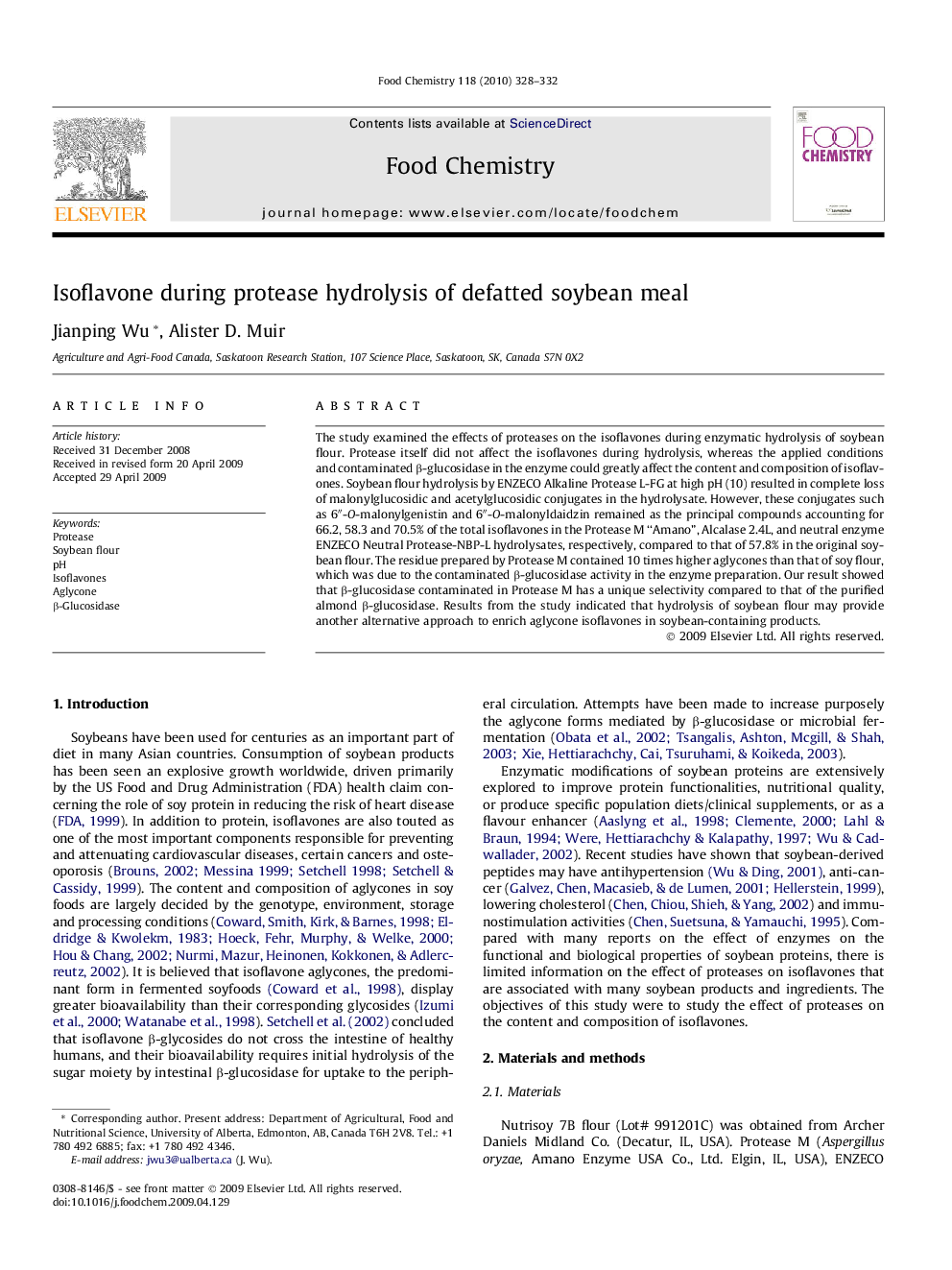| Article ID | Journal | Published Year | Pages | File Type |
|---|---|---|---|---|
| 1186928 | Food Chemistry | 2010 | 5 Pages |
The study examined the effects of proteases on the isoflavones during enzymatic hydrolysis of soybean flour. Protease itself did not affect the isoflavones during hydrolysis, whereas the applied conditions and contaminated β-glucosidase in the enzyme could greatly affect the content and composition of isoflavones. Soybean flour hydrolysis by ENZECO Alkaline Protease L-FG at high pH (10) resulted in complete loss of malonylglucosidic and acetylglucosidic conjugates in the hydrolysate. However, these conjugates such as 6″-O-malonylgenistin and 6″-O-malonyldaidzin remained as the principal compounds accounting for 66.2, 58.3 and 70.5% of the total isoflavones in the Protease M “Amano”, Alcalase 2.4L, and neutral enzyme ENZECO Neutral Protease-NBP-L hydrolysates, respectively, compared to that of 57.8% in the original soybean flour. The residue prepared by Protease M contained 10 times higher aglycones than that of soy flour, which was due to the contaminated β-glucosidase activity in the enzyme preparation. Our result showed that β-glucosidase contaminated in Protease M has a unique selectivity compared to that of the purified almond β-glucosidase. Results from the study indicated that hydrolysis of soybean flour may provide another alternative approach to enrich aglycone isoflavones in soybean-containing products.
